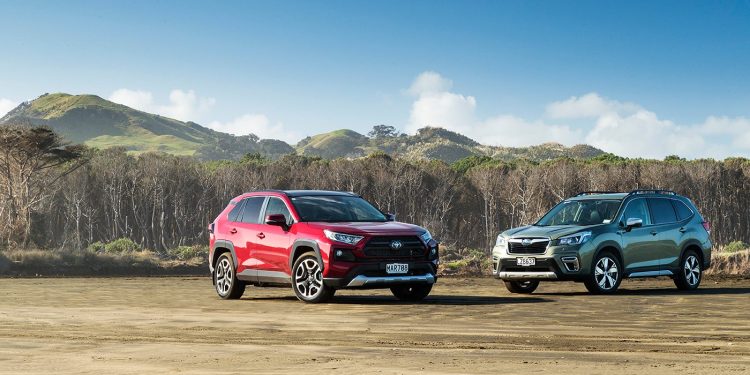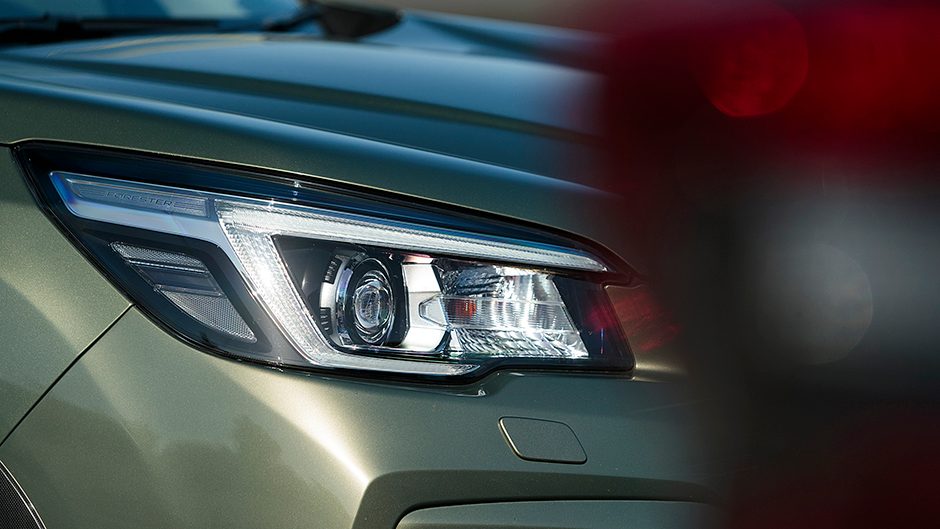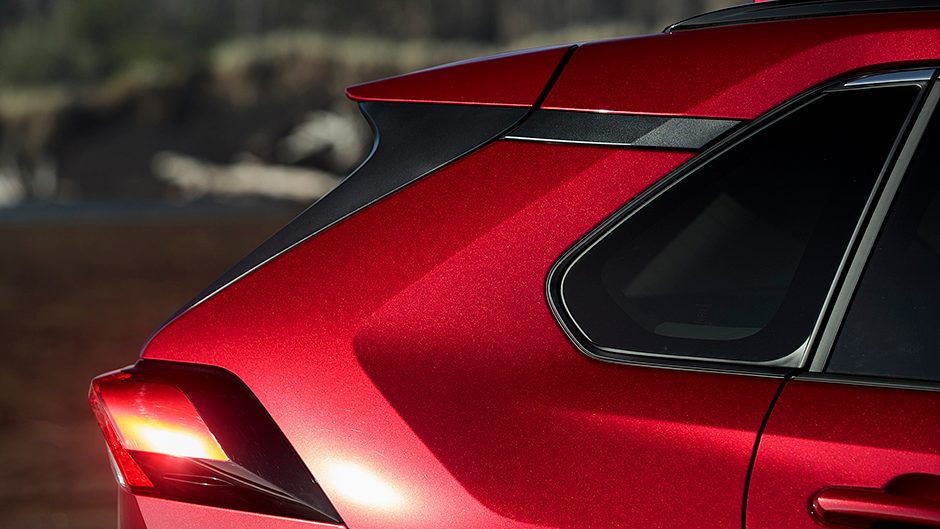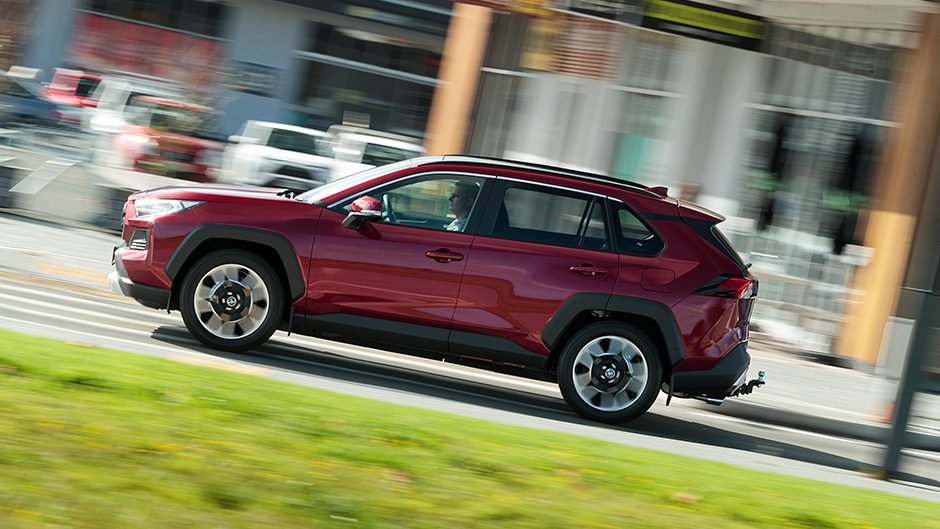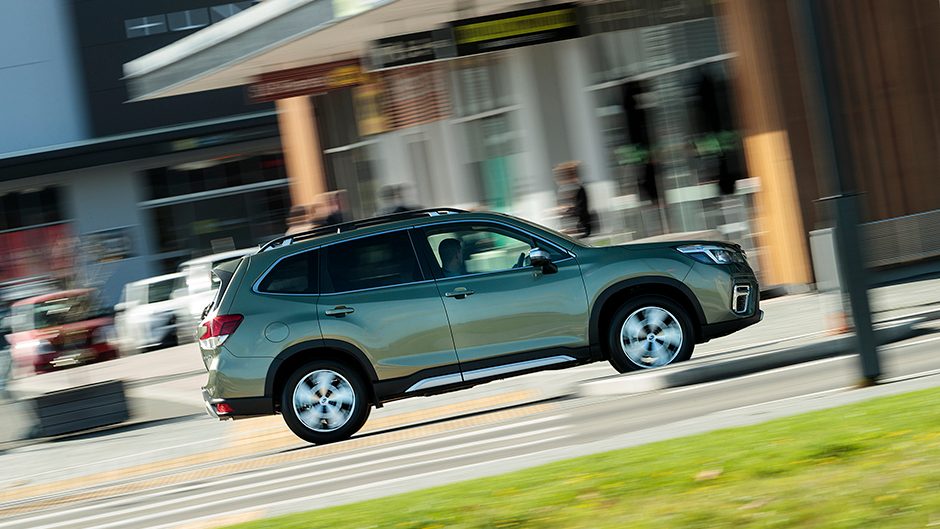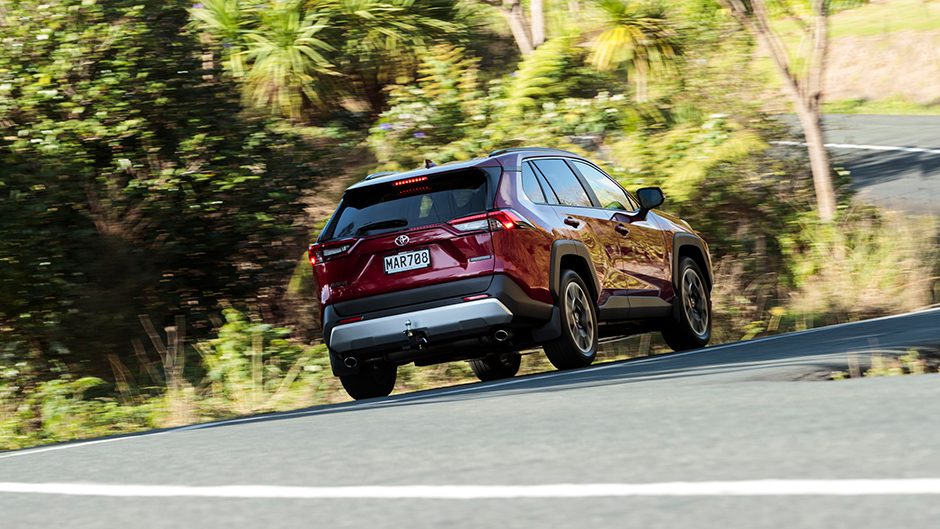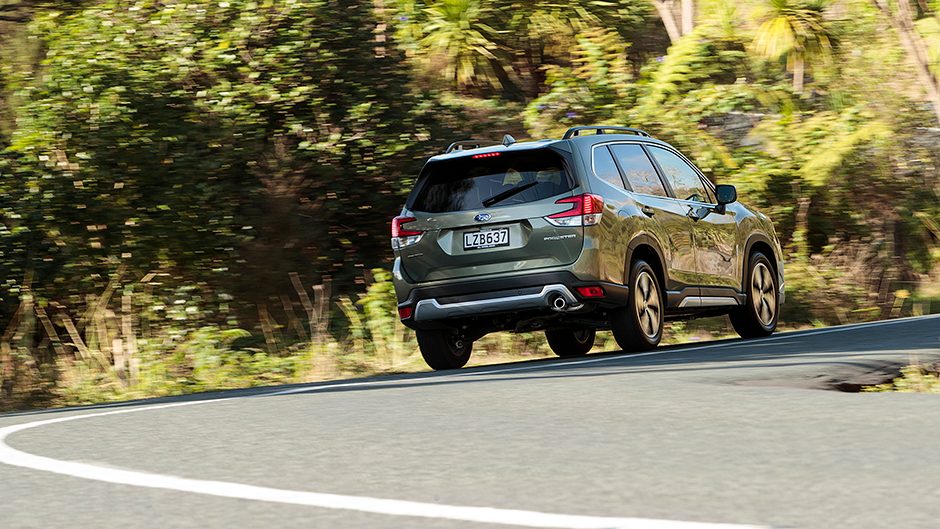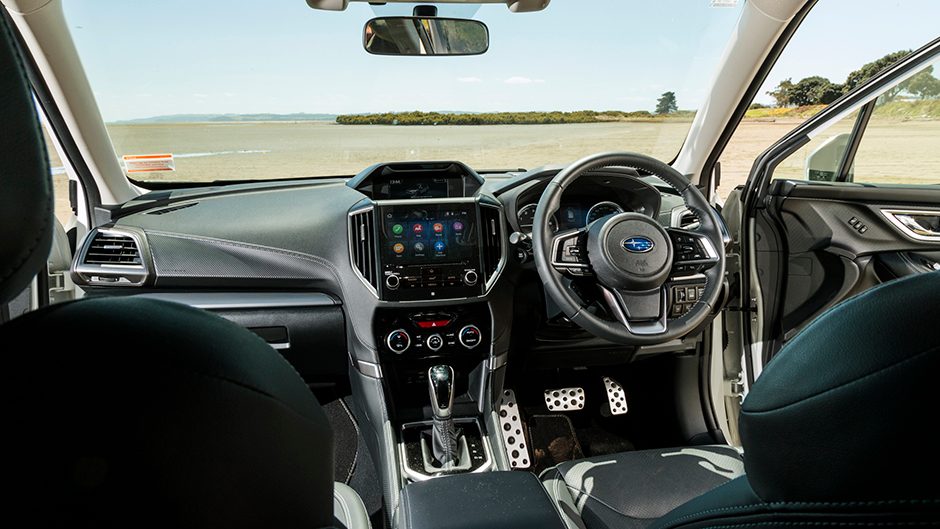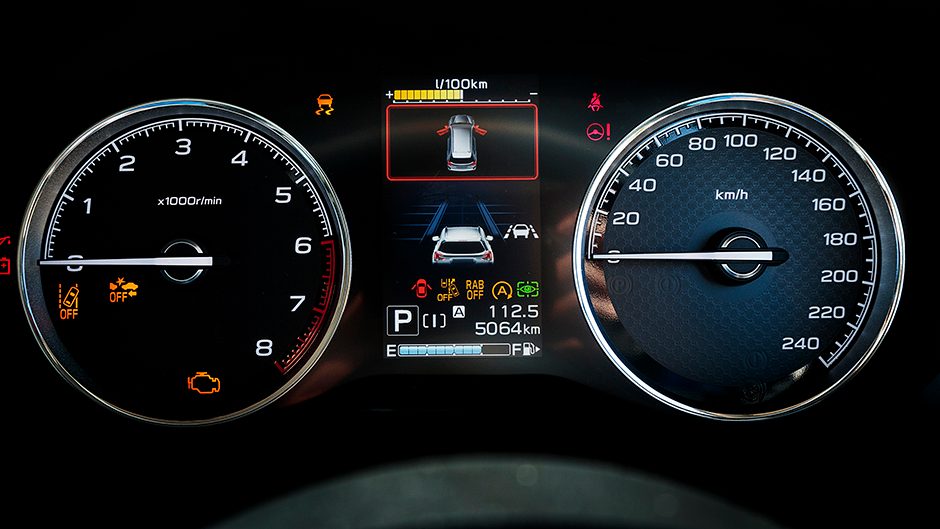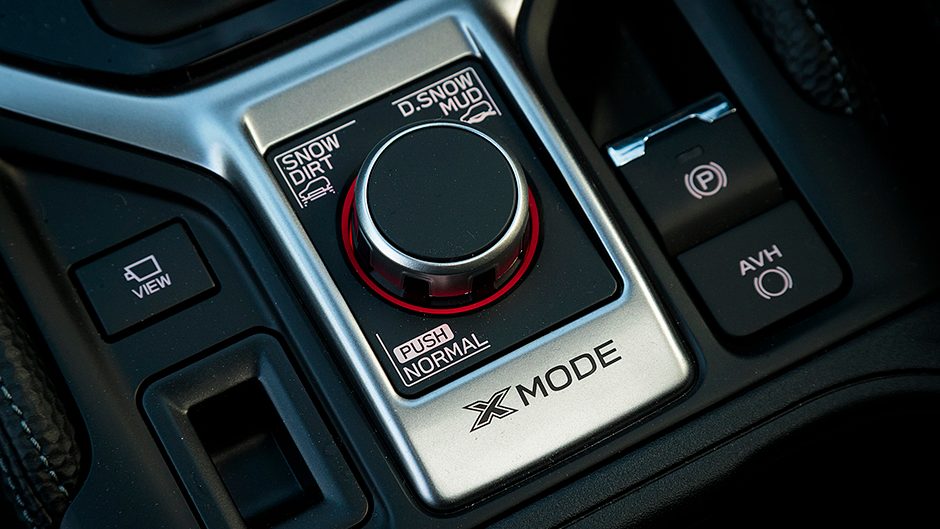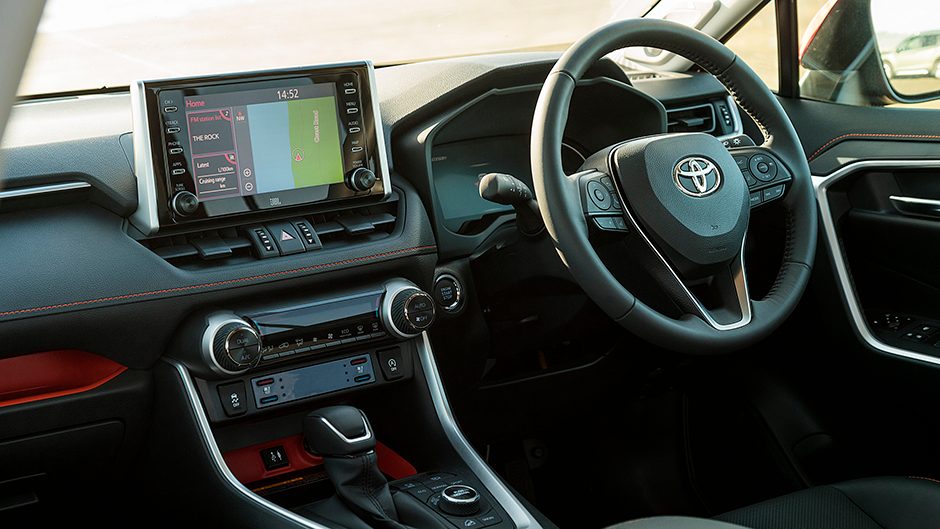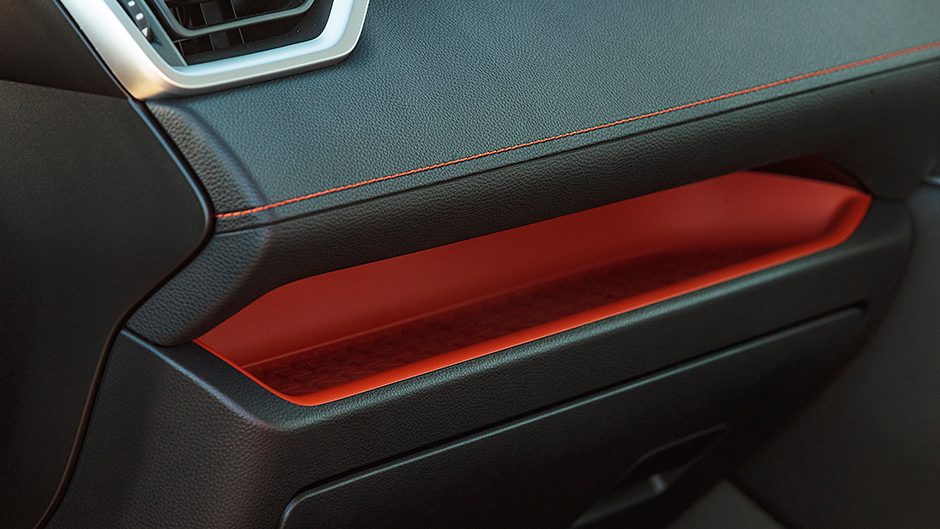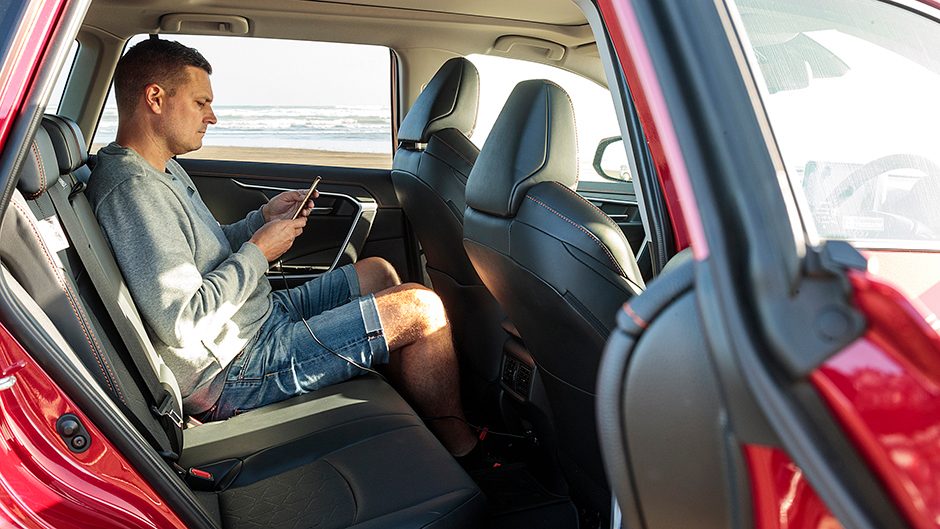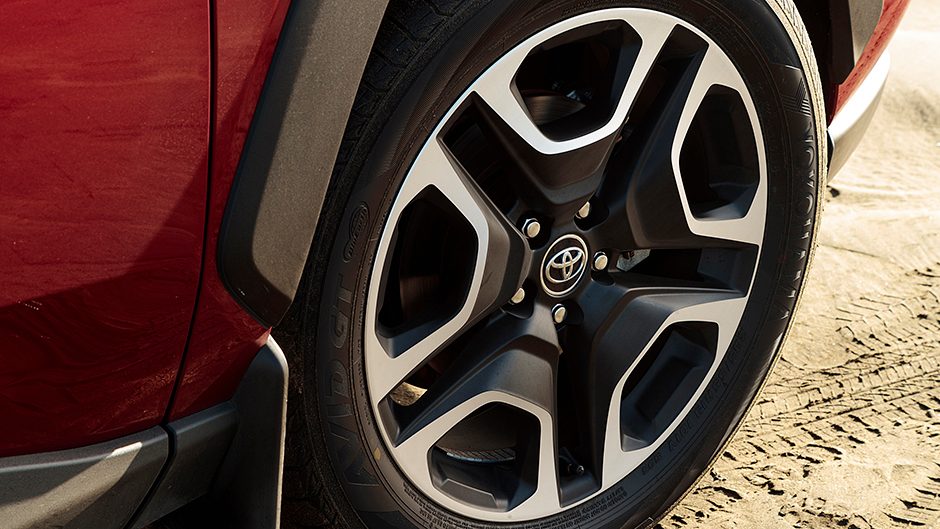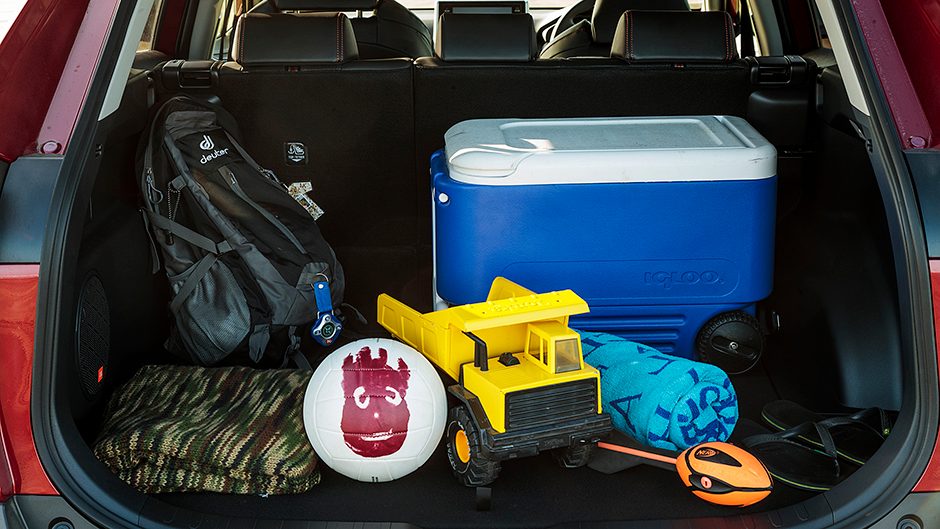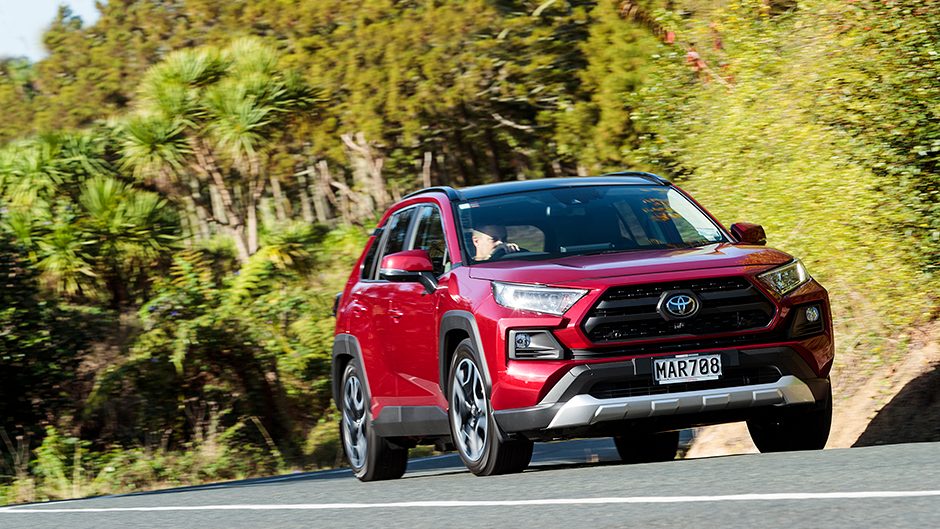2019 Toyota RAV4 Adventure vs Subaru Forester Premium comparison
Words Kyle Cassidy | Photos Tom Gasnier
Toyota’s RAV4 enters its fifth generation, promising more of everything; extra space, better handling, added safety and improved efficiency. So how does it stack up? We brought along the forester to help measure its worth.
Toyota’s RAV4 sure has grown over the decades. As photographer Gasnier was busy composing yet another shot on the beach, we saw a couple of the first generation models pass by. These were the dinky two doors which were simply dwarfed by the latest version. Those originals are now more than 20 years old, and the Recreational Active Vehicle 4 wheel drive, to break out that curious acronym, are still roving around in plentiful numbers, taking people further afield everyday. The concept of a unibody chassis with added clearance and AWD delivered car-like refinement on road with the ability to go a little further off road.
Let’s not forget that in 1989, when the RAV4 concept was first shown at the Tokyo show, most 4x4s were off roaders first and foremost with rugged but rudimentary suspensions. So there was a niche to be filled, and many of the Japanese brands jumped in. In 1995, Subaru showed its Streega concept based on Impreza underpinnings, which two years later turned into the Forester.
Both these models are now in their fifth generation, the RAV4 launching here recently, and we’ve brought the Forester, our current $45-60k class COTY winner, along to see how the RAV4 stacks up.
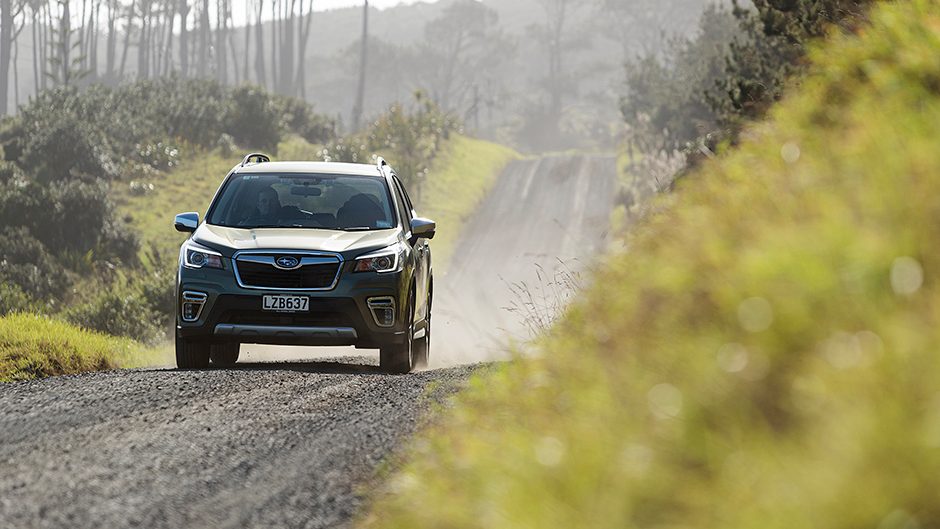
A Rav 4 everyone
The new RAV4 arrives in a market where choice is key to ensure no potential buyer has a reason to look elsewhere. And so there are eight RAVs to choose from, with three powertrain options. There are three variants of the 2.0-litre front driver, three new hybrids and two 2.5-litre AWD models. We have the top Adventure here, on the road for $48,990, no haggling allowed. This RAV4 justifies the all-new tag. It rides on Toyota’s TNGA platform, so its stiffer they say by 60 per cent with a lower centre of gravity and there’s a new wishbone arrangement on the rear.
They’ve chopped the roofline to both improve aeros and sexify the proportions, but they’ve added some ground clearance, thanks in part to larger wheels, which measures 200mm on the Adventure wearing 19s. Further improvements to its figure come from a trimming of the overhangs, and a stretching of the wheelbase, 30mm added there which also improves interior space. It’s a little wider in the body, and the track too. It’s got a low and wide stance going on, and manages to look striking without the weirdness they inflicted on the poor little CH-R.
The Adventure wears a unique front end, 19s and gains a few off-road driving modes. They’ve splashed a few orange highlights about the interior and the ‘sports style’ seating is dressed in fake cows. And on the rear axle sits an active torque vectoring diff, an actual proper one, more on that later. RAV4 uses Toyota’s ‘Dynamic Force’ 2.5-litre engine, an emotive name for a 125kW four pot, but it’s honed for efficiency offering more power with fewer emissions, this RAV rated at 6.7L/100km on average.
Helping on that front is an eight-speed auto, and an on-demand AWD system with a more efficient rear drive disconnect. And this works effectively too; there were only a few times we heard the front wheels squeaking for traction before the rears were on the scene. Toyota’s safety for the people mantra continues with all models gaining the full suite of active driving aids and safety systems. The radar- and camera-based technology delivers AEB with pedestrian and cyclist detection, all speed radar cruise, active lane keeping and traffic sign recognition, among others.
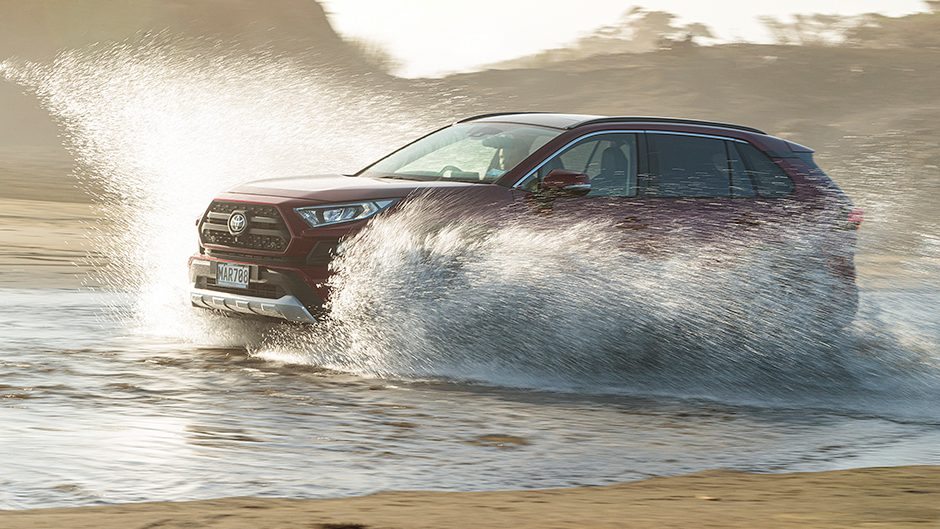
A bit about the Forester then
Forester too is all new in its fifth generation, sitting on Subaru’s modular platform. It’s styling is an evolution of what has been before. It too has grown slightly to improve passenger accommodation and boot space. They gave the 2.5-litre boxer four a major overhaul, for efficiency mainly, and tweaked the CVT auto. It’s good for 7.3L/100km officially.
It has a similar suspension set-up to the RAV4, but the drive system turns all four wheels permanently. It has Subaru’s EyeSight camera-based safety guardian which now incorporates an in-cabin watcher to keep tabs on the driver. For a deeper dive into the Soobie, search our website for the full review. There are three Forester grades, all using the same powertrain, the range kicking off at $39,990 and ending with this, the $47,990 Premium, the most popular. The new Forester is clawing its way up the ranks here, sales of this new generation well up over previous models and only just trailing the Outback YTD. And they tell us 70 per cent of new Forester owners are also new to the brand.
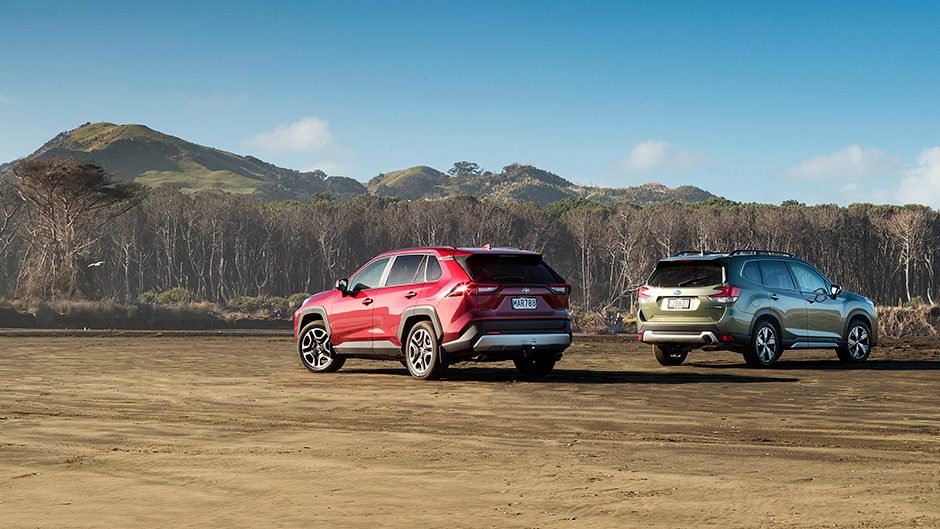
A feel for it
People seem to like the look of the RAV, the wider, lower stance blending well with the angrier expression and angled body lines. The Forester appears narrow and top heavy next to it. But then Forester has never been a peach, it’s appeal more skin deep. The cabin of the RAV gives more width. Toyota has made the centre console wider too, added more hidey holes for your bits, and on higher spec models you get a wireless charger at the base of the centre stack and more USB charge ports. It’s typically well crafted, with some nice touches like the rubberised knobs and door pulls and lashings of foam backed linings.
There are still some hard surfaces about though and we are not overly fond of the upholstery; it feels genuinely synthetic. Both have the typical SUV driver’s perch and there’s not much between them for seat comfort but Toyota serves up heating and ventilation functions, and lumbar support too.
The Forester, with an enlarged glasshouse feels particularly airy, with great outward vision, supported by a better arrangement of cameras (the main display being a regular backing camera, while the one atop the dash shows you what’s alongside) and the screen being more vibrant. This RAV has a surround view element to its camera, but the display is too small for it to be useful. Toyota says CarPlay and Android can be retro-fitted, while the Subaru comes standard with both.
The Forester’s cabin is lined in nice materials and made well but lacks a little of the RAV’s newfound charm. There’s now more rear seat space in the RAV, both in terms of leg and foot room. Still there’s slightly more of it in the Subaru, thanks in part to a higher set seat. The RAV has more width to the bench and a better central perch should you be unlucky enough to be piggy in the middle. And the seat belt is attached to the seat rather than hanging from roof as it is in the Forester.
No problem with headroom in either car, despite big glass roofs, and a pair of USB charging ports will keep the teen’s devices charged and therefore their tempramental moods in check. Toyota has added more air to the boot too, now measuring 540L up to the window line, making it larger than the Forester’s, thanks mainly to a lower floor, though it’s longer as well. The Subaru gets a full size spare while there’s a space saver in the Toyota.
The RAV’s powered tailgate takes twice as long to open as the Subaru’s, the time spent waiting made worse by an annoying beep, beep, beep. Both will tow 1500kg.
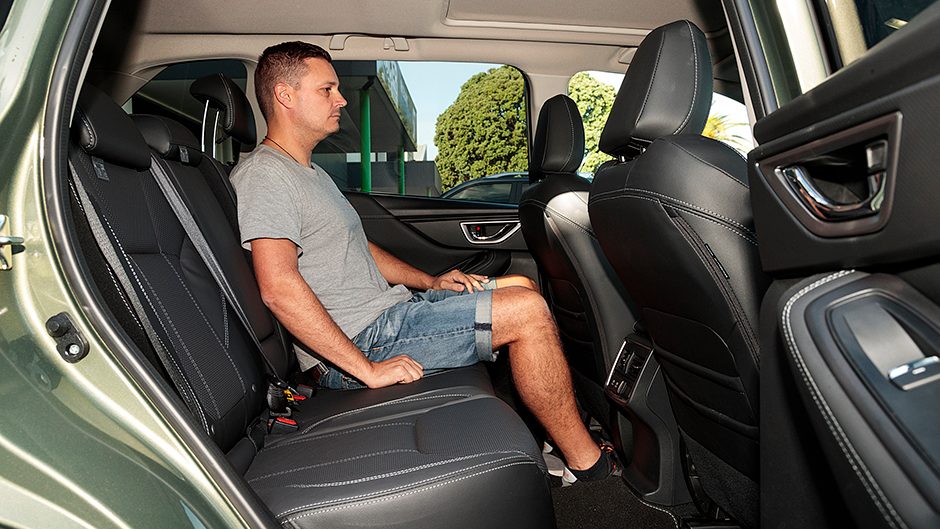
The grind
City commuting is eased slightly thanks to the driver aids. Each system has similar functionality and is easy to set (and disable when they annoy) via well placed steering wheel mounted buttons. The Subaru lane keeping function constantly beeps when it loses sight of the lines, so we axed that, while the driver monitor had to go as well, continually telling us to keep our eyes on the road, despite doing just that.
The Forester’s active cruise is smoother in stop-start traffic, while both collision warning systems give few false alerts. Both fours develop enough pull below 3000rpm for easing around town, and will mooch about on between 1200 and 1500rpm at 50km/h. But we preferred the smoothness and response of the Subaru’s CVT to the eight-speed auto in the RAV. This is programmed to upshift often and early, and isn’t too keen on kicking back down, especially from third to second, making it feel sluggish when you ask for more.
After a week in the hybrid version, it’s the electric RAV we’d choose. The Subaru was marginally better on gas with the round town/motorway consumption relayed as 8.4L/100km versus 8.7 for the RAV. And if you care for air quality, the Forester is Euro6 compliant, the Rav4 is Euro5 while both run on 91.
There’s a bit more fluff in the ride of the Forester, the 19s of the RAV picking up a few more bumps, but both are composed over most roads, and generally quiet too on the highway.
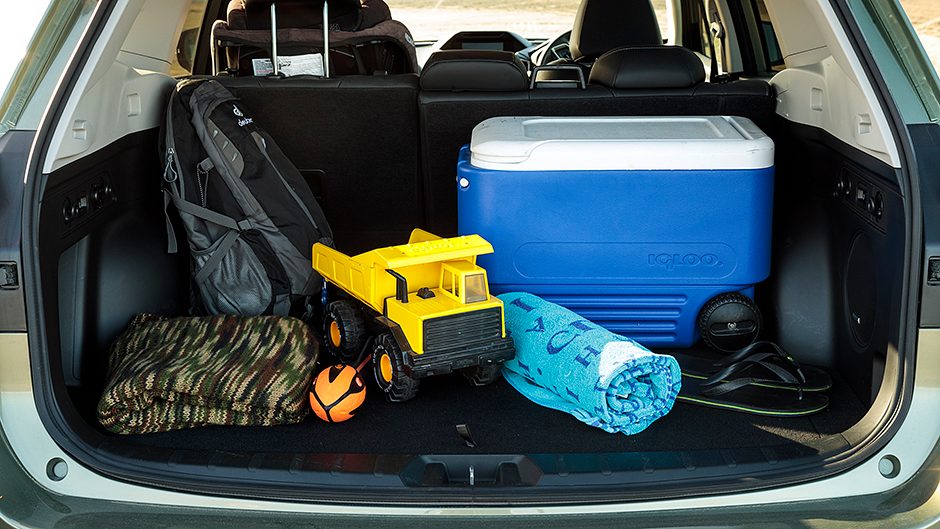
Out adventuring
Despite a slight deficit in power and a little more weight, the RAV is a tenth quicker to 100, and they literally dead heat on the 80-120km/h time. They’ll bomb along winding roads nicely with the engines spinning in the torque zone around the 3000-4000rpm mark, but go better with Sport mode invoked. The Forerster’s auto is rather responsive for a CVT, so at least feels in tune with the throttle and engine.
The RAV’s eight-speeder feels more like a six-speeder in action, there being quite a gap between second and third, while seventh and eighth are well overdriven, but pull it over into its Sport mode and it kicks on okay. The helms in both SUVs go about their business in a dutiful manner with nothing untoward about their action or weighting. There’s even a semblance of interaction with the tyres, the Subaru with a tad more life about it. Both flow well over undulating, bumpy roads, the Forester again with the nicer ride but it gets more of a roll on too.
It however manages to stay fairly neutral in a bend if you play it right, with torque vectoring by brake used in moments of madness to keep the front end from straying. The RAV also has torque vectoring but via an active rear diff. You notice it’s helping hand both on and off the throttle, tightening the cornering line by effectively pushing the rear outside corner. It’s like steering your trolley around the supermarket; you push on the right side of the handle and it turns left.
It makes for a more lively handling RAV when giving it what for, moving the rear around a little to neutralise the usual sledging understeer that Toyota has been serving up for so many years. It works particularly well on gravel roads, carving a more confident arc around bends.
It’s the kind of technology that allowed Tommi Makinen in his Evos to win four WRC titles, and 20 years on, it’s making the RAV4 both a safer and more fun family SUV. It seems a big investment in technology for one model of RAV4 but here’s hoping it finds its way on to the rear of other models in the future.
The Subaru is more refined over rougher paths as it has more suspension travel and ground clearance. It coped better in the soft sands where the Adventure’s Mud/Sand setting wasn’t overly convincing.
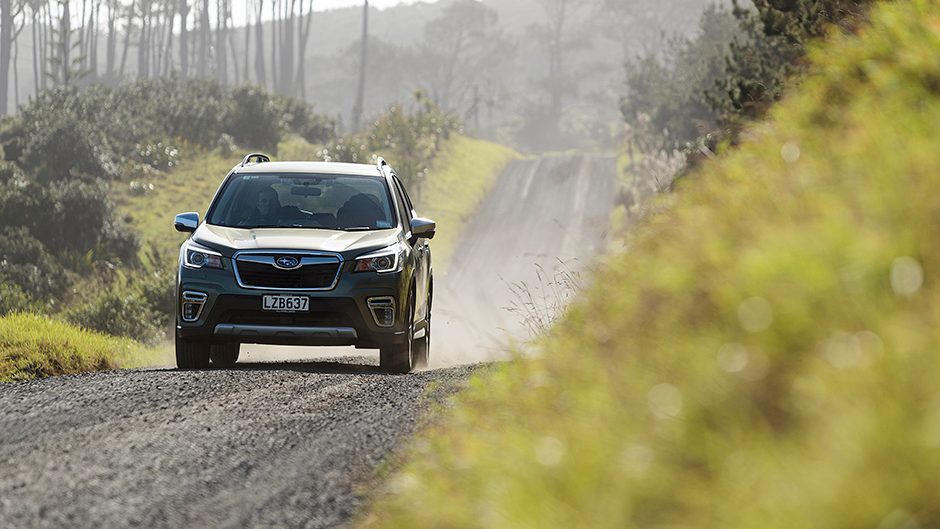
So which is better?
Like so many of these SUVs, there’s little that separates them on the go while each is suitably practical, the RAV with a slight advantage on space. You might like the look of the RAV4 and its extra spec while you could equally be persuaded by the better off road ability of the Subaru. The RAV gets the nod, just, and only because you can get a hybrid version, which is the one we’d choose.
| Model | Toyota RAV4 Adventure | Price | $48,990 |
| Engine | 2487cc, IL4, DI, 152kW/243Nm | Drivetrain | 8-speed auto, on-demand AWD |
| Fuel Use | 6.8L/100km | C02 Output | 158g/km |
| 0-100km/h | 8.92sec | Weight | 1708kg |
| Model | Subaru Forester Premium | Price | $47,490 |
| Engine | 2498cc, flat 4, DI, 136kW/239Nm | Drivetrain | CVT, all-wheel drive |
| Fuel Use | 7.4L/100km | C02 Output | 168g/km |
| 0-100km/h | 9.10sec | Weight | 1643kg |


